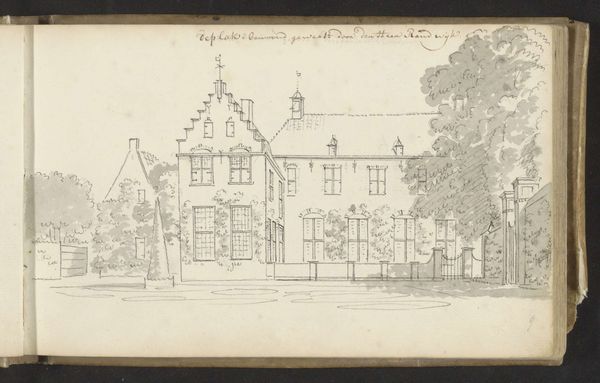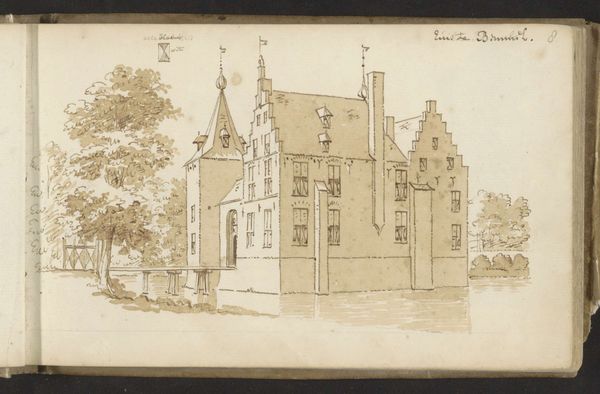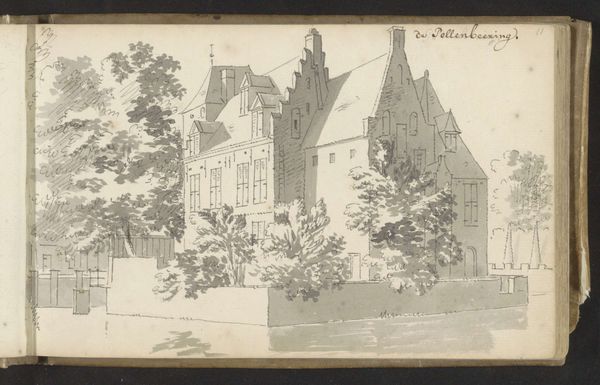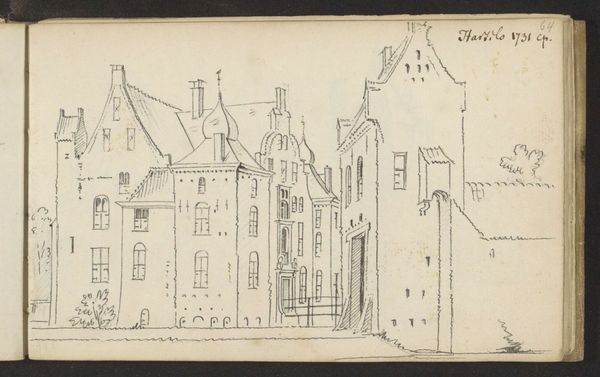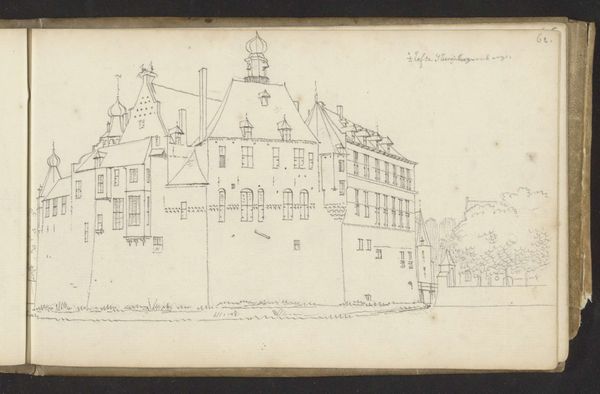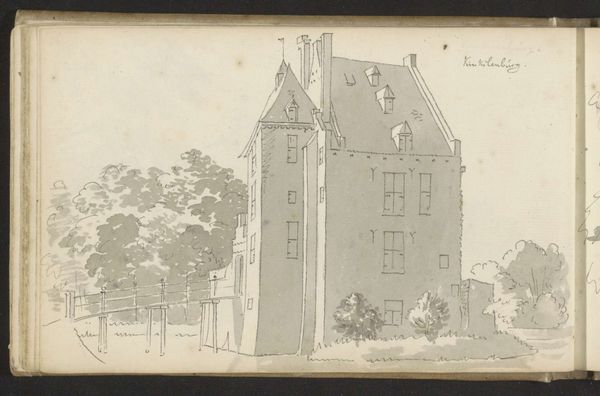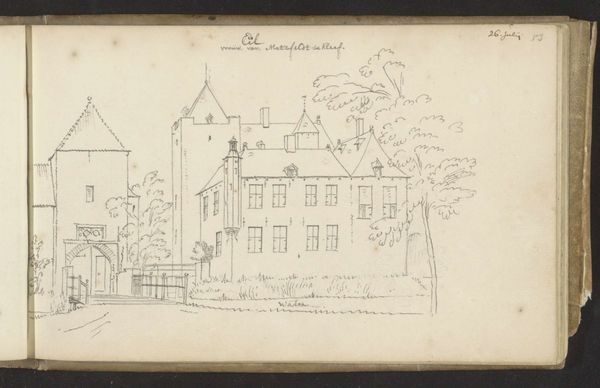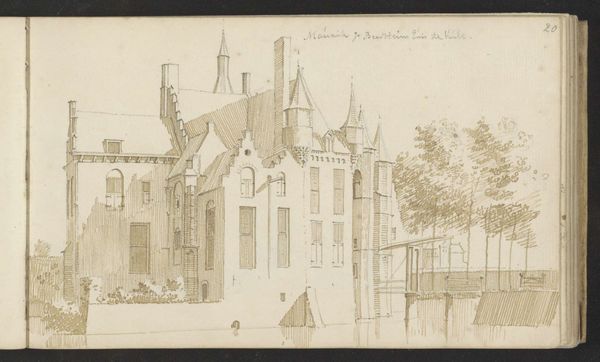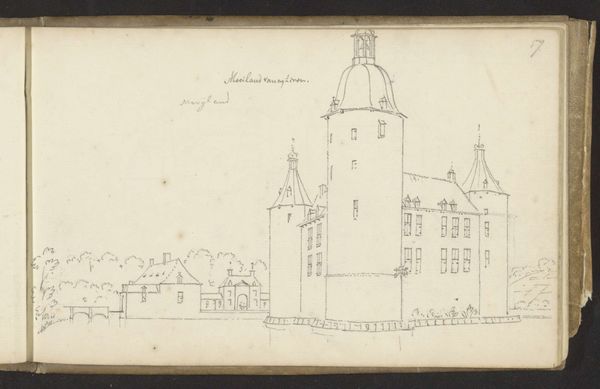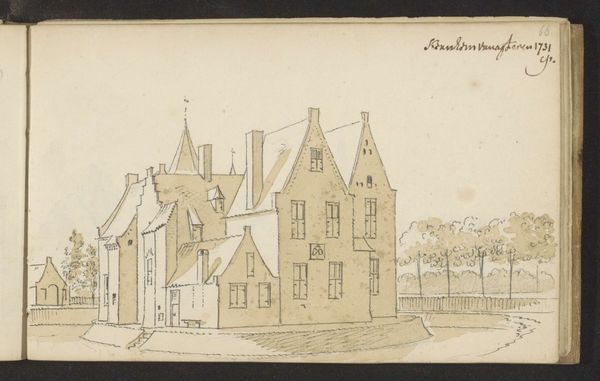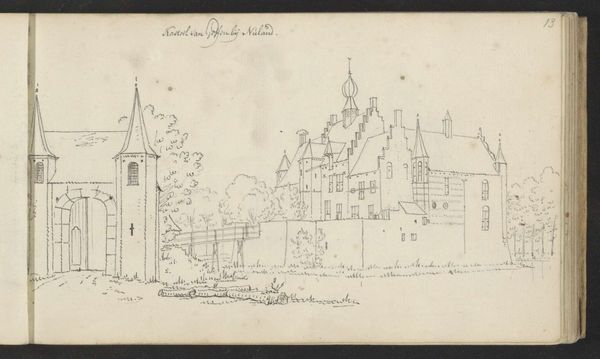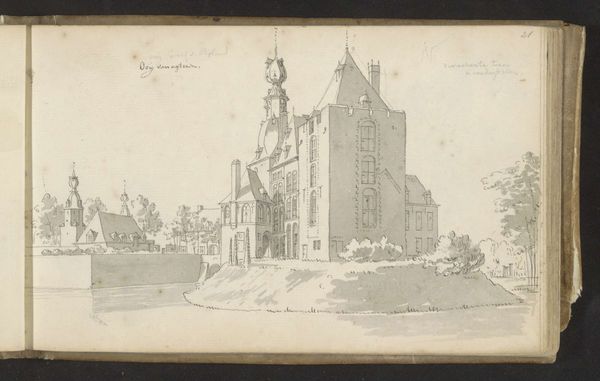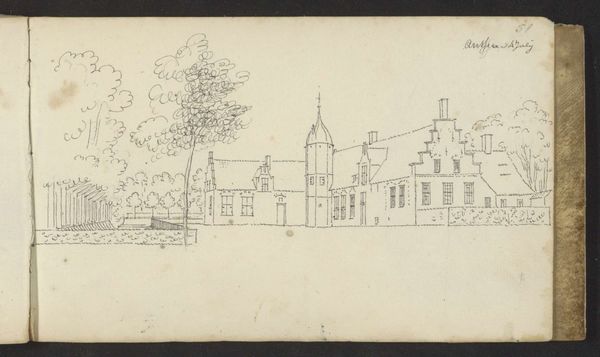
drawing, paper, ink, pen, architecture
#
drawing
#
aged paper
#
dutch-golden-age
#
sketch book
#
landscape
#
paper
#
personal sketchbook
#
ink
#
sketchwork
#
pen-ink sketch
#
pen and pencil
#
pen work
#
sketchbook drawing
#
pen
#
cityscape
#
storyboard and sketchbook work
#
sketchbook art
#
architecture
#
realism
Copyright: Rijks Museum: Open Domain
Curator: This is Abraham de Haen the Younger's 1731 ink drawing, "Huis De Pollenbering te Bemmel," currently held at the Rijksmuseum. Editor: My first impression is the incredible restraint. The limited tonal range and delicate linework create a peaceful atmosphere. Curator: Indeed. De Haen employs hatching and cross-hatching techniques with incredible precision to articulate form and light across the architecture. Note how the artist suggests recession through subtle shifts in line weight. The materiality of the ink itself adds texture to the aged paper, wouldn't you agree? Editor: Absolutely. One immediately gets the sense that this was sketched onsite, perhaps during the process of land surveying for which the de Haen family were known, given the pragmatic marks and minimal detailing, plus it clearly forms part of a larger sketchbook. Curator: A crucial point. The Dutch Golden Age valued observational realism, and de Haen’s sketch exemplifies this ethos through the rigorous depiction of spatial relationships. Notice, however, how he adds that crest to suggest a symbolic importance, perhaps connecting the site to a specific family narrative or legal matter? Editor: And that practical bent of the image is very striking. Here we find both documentation and potential symbolism. But it seems evident the material conditions of making this work were relatively economical, using ink—something immediately to hand. I suppose my lasting feeling relates to the context surrounding this practical drawing, as it brings historical labor relations to my awareness, which would be typical for a residence of such a size during the eighteenth century. Curator: A fitting insight to bear in mind as we engage with the interplay between the architecture's formal construction, which speaks to status and aspiration, and its cultural function. Thank you for that. Editor: And thank you, this drawing serves to connect formal precision with wider, more practical making and living.
Comments
No comments
Be the first to comment and join the conversation on the ultimate creative platform.
